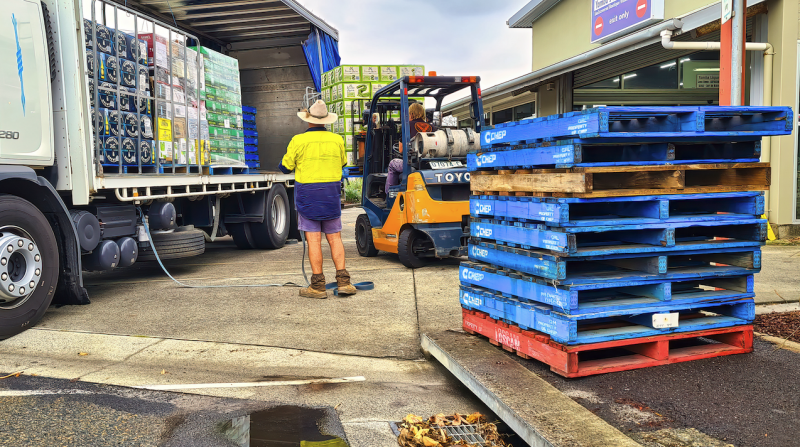- Brambles (ASX:BXB) posts strong 1HFY24 results but noted volumes will not grow through FY24, likely triggering a moderate selloff
- The market reaction has been subdued and it appears investors are waiting to see more
- Ultimately, the company is the beneficiary of lower lumber and fuel prices
- The company, which sells pallets for the transport and sale of other goods, can be seen as a thermometer of the global economy
- Shares last traded at $15.17
Logistics giant Brambles (ASX:BXB) – an A$21 billion logistics company that is well known for being a provider of wooden pallets – has boosted its dividend and upgraded its forward profit outlook.
Sales revenue jumped 10 per cent vs pcp; underlying profits were up 19 per cent and free cash flow pre-dividends increased US$303 million.
The company started out the day strong but had declined 0.03 per cent to $15.17 in mid-afternoon trades. Likely turning off some shareholders is that the company doesn’t expect volumes to increase through FY24.
“While new business momentum is gathering pace, growth with new customers in the half was slower than expected,” Brambles CEO Graham Chipchase added.
Regardless of market reaction, however, that Brambles is reporting a stronger outlook lends itself to a different story.
Brambles’s half-year result is, ultimately, a symptom of a global supply chain recovering from myriad COVID-borne issues that smashed logistics sectors everywhere.
Ironically, the logistics giant is itself a beneficiary of improved global logistics.
The company was straightforward in outlining why exactly its results were positive under a subheading regarding the macro context.
“Brambles’ operating environment in 1H[FY24] was characterised by a significant improvement in market pallet availability.”
Case in point: a decline in the price of lumber from COVID-highs makes them cheaper to make and therefore buy; a post-COVID labour market recovery in the forestry, transport and warehousing sectors wholemeal is assisting Brambles’ operations broadly, and, lower shipping and transport costs on lower fuel prices are encouraging trade.
Which could make a bearishly inclined person concerned that the price of Brent Crude is actually up four per cent in the last month to US$83.24/bbl.
The company flagged a “moderate” increase in costs as inflationary pressures continue to bite, though, noted this was largely offset by cheaper fuel and lumber, more important to Brambles’ bottom line.
Fuel prices and lumber prices both shot up during the COVID era due to shortages of supply and an unexpectedly rapid recovery in demand through 2021-2022. When COVID hit, oil rigs were shut down and workers sent home – but an oil rig takes months, or years, to start up again.
In turn, lumber prices were tied to the forestry industry, which also sent workers home, lowering supply. On top of that, as fuel got more expensive, shipping those pallets around the world got more expensive.
(You also had a situation in Europe where the price of firewood shot up because EU gas prices became too expensive for households.)
Brambles stands in a unique intersection between economies and markets which means it can truly be looked at as a thermometer for the global economy.
Another big reason the company’s revenue is improving is because people are now buying more pallets from Brambles – because they are cheaper and available. Previously, retailers had been holding onto and re-using older pallets over and over.
Brambles noted higher damage rates today.
“Operationally, increased pallet returns and recoveries resulted in incremental repair, handling and transportation costs … this included the impact of higher pallet damage rates linked to the longer time spent in customer and retailer supply chains,” the company noted on Friday.

